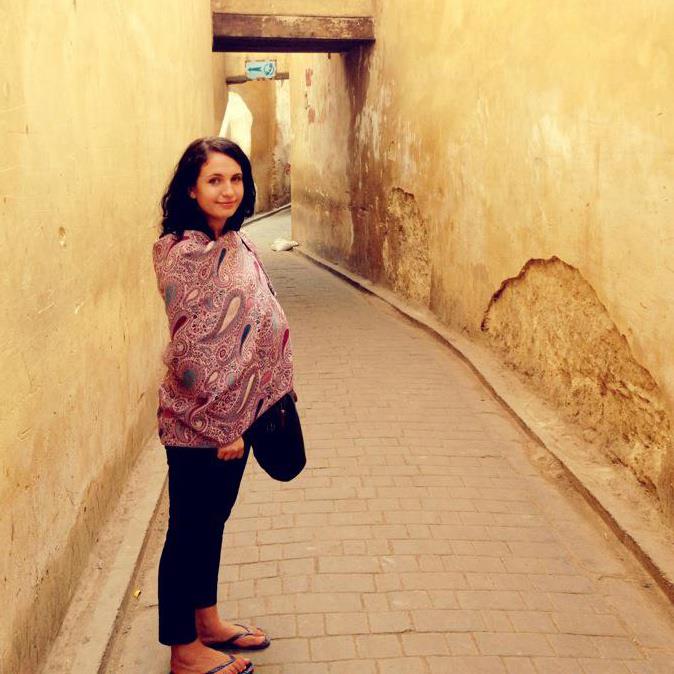When Things go Wrong on the Road
The truth is travel, like life, is not all peaches and roses. Stuff goes wrong, more often that you’d think. A bus will fail to show in South East Asia, you might get your camera stolen in Los Angeles or your credit cards stolen in Paris. Things go wrong so you need to have a game plan of how to deal with it when it does so you can minimise the damage. Here are my tips for dealing with problems that crop up on the road:
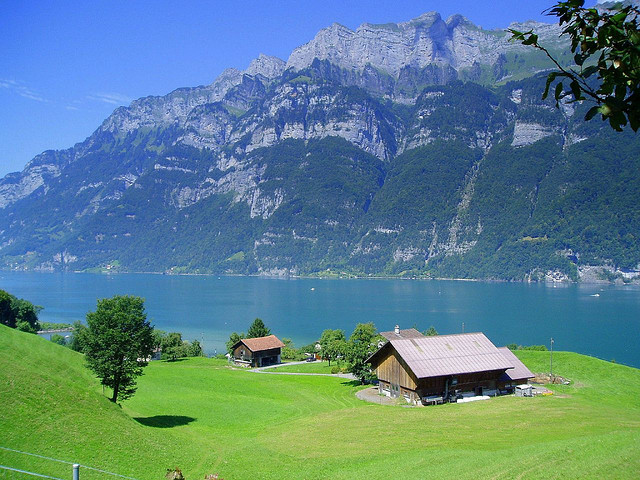
1) Consider Legal Advice
If anything goes wrong – to a serious level – you might want to consider touching base with some compensation lawyers. I have heard of travellers damaging their rental cards badly and being out of pocket or some insurance companies refusing to not cover things that they should. When I was traveling I had to return home urgently because of a death in my family. My insurance company hesitated to cover me, quoting all these reasons why, despite there being a clause for any unforeseen reason requiring you to fly home. One of my friends, who is a compensation lawyer, helped me craft a pretty convincing email and they decided to fly me home in the end. Of course there will be a cost involved with professional legal advice, but depending on what the circumstance is you might find it to be the best route of action moving forward.
2) Alert Your Travel Insurance As Soon As Possible
With many travel insurance policies you can make the claim when you return home, but if you’re traveling long term that might not be soon enough. Whatever the issue, alert your travel insurance as soon as possible and before any medical treatment where possible. The travel insurance company often has to approve your coverage before it happens, so it is not wise to leave them out of the loop. The sooner you notify your travel insurance company, the sooner you’ll know what’s going on.
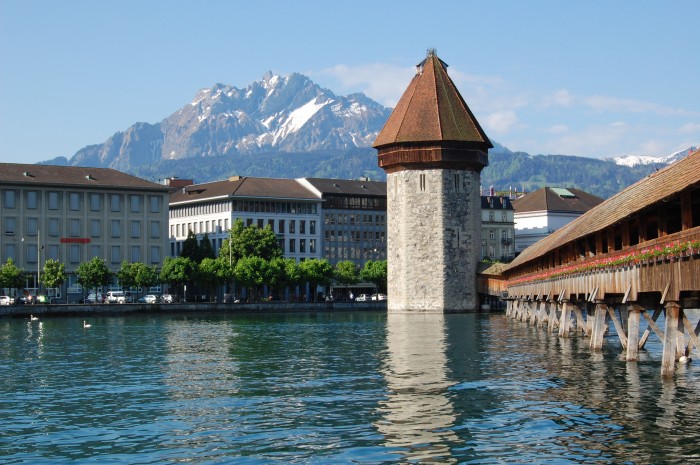
3) Keep Your Bank Up-To-Date
Want to be locked out of your bank account when you’re on the other side of the planet? Nah, not my idea of a good time either. You actually need to notify your bank before you leave the country where you’re going so they don’t freak out and lock you out of your account. Likewise, if your wallet gets stolen call your bank as soon as possible so they can minimise the damage the thieves can do with your account. There’s not much worse than being stuck far from home with no access to your money!
Despite all that can go wrong, travel is one of the most rewarding experiences you can enjoy. Just be smart and seek the help you need to ensure a safe and secure trip.
Top Places to Visit in New Zealand on a Road Trip
New Zealand is a beautiful country – there’s no secret about that. A handful of great films have been shot here, in part because our scenery is so beautiful. I always tell visitors to New Zealand that the best way to explore it is by your own car. Public transport in New Zealand isn’t cheap and when you travel by car you have the option to stop off wherever you like along the way. It might also be a good opportunity for you to try out one of a new car, such as a 2015 Ford Mustang which will be released later in the year. Most people who come to New Zealand tend to stick to one island and if you only have time for one I suggest visiting the south as it is personally my favourite. Here are the destinations I would suggest you visit:
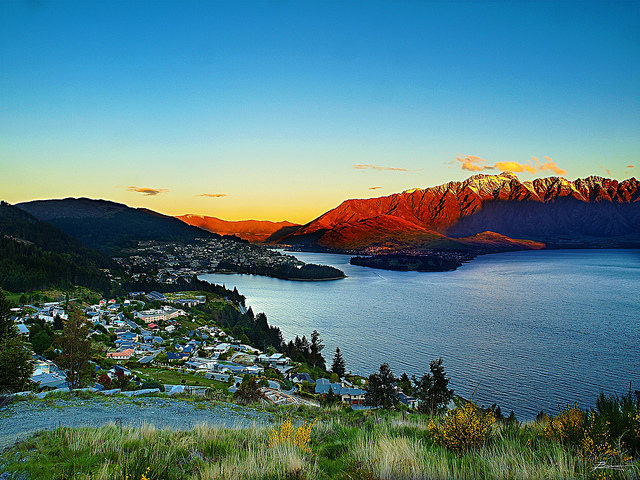
1) Queenstown
This is where New Zealanders go for their holidays and for good reason – it is stunning. It is a great destination no matter the time of year as it gets quite busy during the summer with a lot of activities happening on and around the lake. In winter, Queenstown hosts a festival called Winterfest and is a great hub to many of the ski fields nearby. Queenstown is one of those places where you walk around and just admire the natural beauty. There’s a gondola and luge here which are definitely worth the visit.
2) Nelson
For the best beaches in the south island, there’s no where better than Nelson. This little town has a laid back vibe that is hard to beat. One of my favourite beaches is Kaiteriteri beach – the perfect place to grab some fish and chips and watch the waves crash down. The World of Wearable Art & Classic Cars Museum is one of the best museums in New Zealand, combining art and cars ensuring that everyone in the family will be entertained.
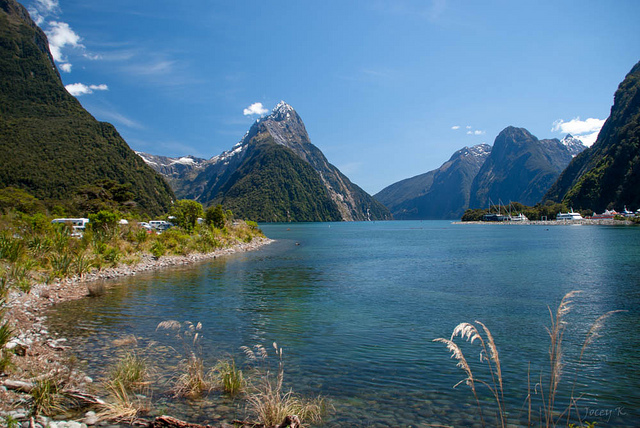
3) Milford Sounds
Do you want to take a cruise through one of the most scenic locations in the world? Well then Milford Sounds is an essential place for you to visit. Whether you want to kayak around the sounds or enjoy it from the comfort of a boat, this is an unmissable destination on your next visit to New Zealand.
Have you ever been to New Zealand? Where are your top three places?
Top Tips for Staying Fresh on the Road
It’s no secret that traveling can be really demanding on your body – long flights, bus rides, food poisoning, cold showers and so forth. I personally take a few products from home that I find essential to keeping myself healthy, smelling good and sane while traveling.
Here are the products and tips I regularly use when I travel:
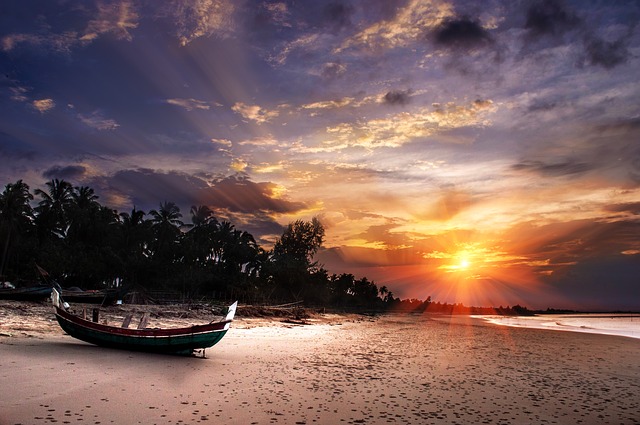
1) Great Deodorant
There’s nothing worse than being stuck in the vivid heat of Asia unprepared. You will NOT smell good. There are a number of brands of deodorants that you can purchase, but I tend to stick with Rexona. Bare in mind, if you’re traveling to Asia in particular, that many countries only seem to sell deodorants that contain bleach in them. For someone who is already pasty white and doesn’t like the idea of coating themselves in harsh chemicals, this is a terrifying thought. I always take a spare deodorant with me to Asia so I don’t have to worry about buying locally. Check out Rexona Clincial Reviews for more information about great deodorants.
2) Refreshing Moisturiser
Airplane rides wreak havoc on my skin. I think it’s a combination of the fact flights tend to be really dehydrating, with the recycled cabin air and pressure inside the plane. All of these factors combined with usually poor sleep results in my skin looking like a war zone. As such, I always take special precautions to ensure I have a small, refreshing moisturiser on hand. At the moment I’m using Mac Strobe cream which is great because it has a little shimmer, which brightens up your face after a crappy flight. I often use a face mask as well during the flight to keep things really hydrated.
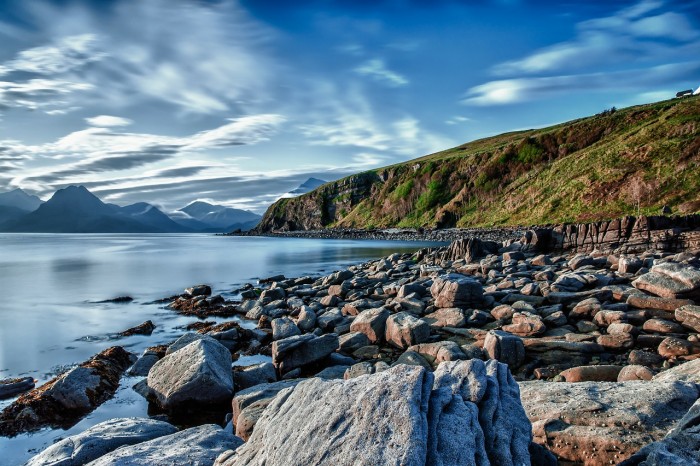
3) Travel Pillow
It took me so long to get around to buying one of these travel pillows, in fact it wasn’t until I went on my trip with my sister last year that I eventually caved and bought one. Holy crap – best $25 I have ever spent for traveling. I use it a lot, not only for the planes but trains as well. A few times I stayed in guest houses that had really crappy pillows and even used my travel pillow as my main pillow. I am one of those people who are a zombie if they haven’t had enough sleep, so a travel pillow is really a life saver for me.
4) Activated Charcoal
During my travels I have had food poisoning more times than I want to count. It always seems to happen at the worst time – a 36 hours bus ride in Vietnam, or when I was planning to leave an island but instead was stuck there for a few extra days because I was too sick to leave. I have tried a lot of different antibiotics during my travels, many of which are really strong, harsh chemicals. Activated Charcoal can help with food poisoning, or poisoning in general, by absorbing the nasty chemicals without damaging your body.
Travel can be hard work, even though it is a lot of fun and extremely rewarding. A little planning can go a long way in ensuring you will be comfortable, refreshed and smelling good on your travels.
I Hated Paris – But I’m Going Back
As a small child, I often dreamed of Paris. The Eiffel Tower, croissants and macarons, and lovers joining their locks to bridges, it seemed to be a place of delicious food and love. What’s not to like about that?
At one point in time (now long gone) I had hoped my future husband might just propose to me on top of the Eiffel Tower. In case you’re wondering, I am very original.
I first visited Paris almost four years ago, in the second half of 2010. I should have liked it, after all it is a beautiful city.
From the beginning it was obvious Paris and I were not to be friends.
The trains were on strike, making getting around challenging.
I don’t speak French, and despite saying Bonjour enthusiastically and accidentally massacring some French words in my best attempt, I was not well received.
In fact, the store keeper of a deli refused to serve me because I couldn’t ask for a weight in French and ushered me out of the shop.
I had some more staff at a French equivalent of Subway refuse to serve me because I didn’t speak French.
Basically, the locals hated me.
There was also the fact that everywhere seemed to smell like urine.
Now I’m not sure what constitutes romance for you, but for me romance tends to be a urine-free affair.
Walking beautiful streets of Paris that were full of history and urine was an interesting experience and frankly not what I was expecting.
I started to wonder if I was the only person in the world who wasn’t happy that Paris smells like pee?
Despite this terrible time I had in Paris, we’re going back. In fact it is the first stop on our itinerary in Europe.
Why Am I Going Back to a City I hated So much?
Truth be told, Paris is probably in my top four most hated places in the world. The other notable mentions are Laos (although I liked Luang Prabang), Kuta in Bali, Sofia in Bulgaria and Paris in France.
The real reason I’m going back to Paris is: It was the cheapest place to fly into.
The truth is, I don’t want to hate Paris. I want to ride around on bicycles in Paris, buying giant baguettes and croissants and overdosing on good cheese and wine. I want to visit the Louvre and go shopping on Champs-Élysées. I want to have breakfast in Laudreé and people watch.
I want to like Paris.
That’s where I need your help.
Have you been to Paris before? If so, please suggest some must see places and things to do in Paris, so hopefully I can fall in love with it like so many others before me.
Our Current Travel Plans
Forewarning: Our plans are likely to change until everything’s set in stone, but this is our current itinerary. If you are going to be in any of the same places as me, please let me know. It would be great to connect with you!
At the moment, our plan is to make our way to Panama relatively quickly. In two and a half weeks we depart for Bali, where we’ll spend a month there. I want to enjoy the beaches, snorkelling and get my yoga on. My boyfriend wants to surf, so this is a perfect destination for us both.

From Bali we’ll head to Singapore for a few days, before making our way to Europe. While we would like to spend more time in Europe, we’re going to move through pretty quickly spending around 2 weeks in France and another 2 weeks in Greece before flying down to America.
Chances are, we’ll fly into Florida. This is an intentional decision, but mostly because this is a great base to fly to Panama with. I’ve only been to America once and this will be Ben’s first trip, so he’s really excited. We plan to do a lot of fun things in Florida, including visiting the theme parks in Orlando. One of my friend mentioned that you can get Great Orlando Tickets online for a considerable discount, so that’s something we’ll definitely look into when we’re there.
From Florida we’ll fly to Panama, where we are looking to base ourselves for a few months. Why Panama? Well, it looks gorgeous, they speak Spanish and there’s great surf. As well as being more affordable than New Zealand (and warmer) it’s also one of the safest places in Central America. All in all, Panama just seems to tick a lot of boxes for me and I’m very excited about finally making my way to Panama.

After then? Who knows. I might up spending a lot of time in Central America, heading to South America or even making my way back to Asia or Europe. The truth is, I don’t know. There are so many places I still want to explore, but there’s also no real rush. I want to slow down, savour things and enjoy the great adventure that life is.
Do you have any suggestions of must-see places I have to see when I’m in Panama? It can be in Panama or nearby, I would love to hear from you.
4 Things You Need for a Safe, Healthy Holiday
I am in serious travel planning mode. I have bought packing cubes, new locks, a carryon suitcase, a new passport and the list goes on and on. It is so exciting preparing for a new trip and this time I’m heading off with my boyfriend, which will be a treat in itself. After 30+ countries, 2.5 years on the road and a number of horror stories, I would consider myself to be well travelled. As such, I think I know what I need to travel safe and healthy:
1) Travel Insurance
I can’t believe people fly out without this, especially to countries where their medical costs aren’t covered. It just seems like a bad idea! I have seen too many horror stories in the news and on Facebook about people who had accidents (even if they weren’t their fault) while traveling and their family have had to raise tens of thousands of dollars for their treatment. It just seems stupid! Now there are lots of benefits to getting travel insurance, too many to list here, as well as travel insurance for over 60s benefits. Whatever you do, don’t leave the country without properly protecting yourself and insuring your health and safety.

2) Activated Charcoal
If you’re heading anywhere where you might find yourself with an upset stomach or food poisoning, please take some activated charcoal. When I have been traveling in Asia, an upset stomach is a fairly regular thing for me, happening every couple of months. I used to take a few heavy doses of antibiotics and hope that things disappeared as quickly as possible. However, antibiotics can be quite hard on your body and interfere with other medication, so I prefer to avoid them where possible. Activated charcoal is a great natural alternative and can help with other stomach aches, as well as hangovers too – magic.
3) A Spare Credit Card
I suggest traveling with at least one spare credit card and a spare debit card as well if you can. So many of my friends have had their bags snatched or stolen and found themselves with no spare cards or cash in a foreign place. That doesn’t sound like my dream holiday. Having a spare card is great because if one gets stolen or used online for fraudulent purchases, then you have t least another spare when you need it most.

5) Noise Cancelling or Reducing Earphones
What are your essentials for a great holiday? Let me know!
A Guide to the Isle of Wight
The Isle of Wight is truly a hidden gem. Statistically sunnier than anywhere else in the UK and only an hour away from London – the Isle of Wight should theoretically be fit to burst with tourists. Fortunately, this isn’t the case. What it is filled with however, is an array of water sports and activities to pursue, beautiful beaches and great local food.
Here’s a guide to the gorgeous Isle of Wight…
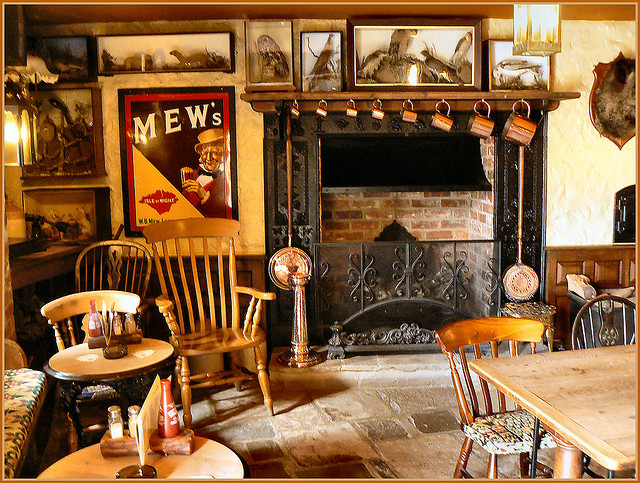
Local Cuisine
Foodies will simply adore the culinary delights that hail from the Isle of Wight. Take your pick from the island’s garlic farm which is home to locally-made jams, chutneys and generously-sized garlic bulbs or take a trip on the Wight Taste Trail. Here, you are invited to taste local produce by the island’s leading food producers and learn how it is made.
When you consider that there is one pub every square mile, there really is no excuse not to try some of the local fodder here.
Feeling Adventurous?
Part of the Isle of Wight’s big attraction is that it makes holiday makers feel as if they are a world away and this is largely down to an unexpectedly large selection of adventure sports on the island. Adrenaline junkies can enjoy everything from tree climbing and horse riding to sea kayaking and kite surfing. You can happily spend one day in the Isle of Wight learning the kind of skills you would normally only travel abroad to experience!
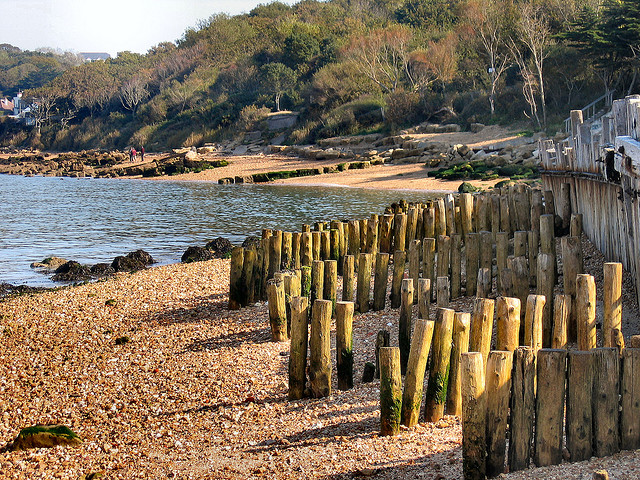
Nightlife
Whilst the island is not hugely known for its nightlife, locals like to improvise with the help of glamping and beautiful coastal scenery. There are plenty of events throughout the year that may take your fancy from open-air music festivals such as the popular ‘Bestival’ which runs from the 4-7th September to the many ‘Electric Woods’ events which stage outdoor concerts and light shows in the picturesque setting of Robin Hill Country Park.
Beaches
The beaches on the Isle of Wight are considered as some of the best in Europe – 17 of which are award-winning. What makes them so special? As well as being home to many great facilities and large family-friendly stretches of open sand, the Isle of Wight beaches have an annual appeal. Ramblers and holiday-makers alike flock to the island’s rural beaches during autumn and winter to get a glimpse of the unspoiled heritage coastline in all its breathtaking natural beauty. The Tennyson heritage coastline is particularly recommended for postcard picture-perfect views.
There you have it. An other-worldly home so close to home in the UK that can truly offer something for everyone – the Isle of Wight should feature on everyone’s travel wish list.
The Biggest Lesson Travel’s Taught Me
As we prepare for our adventure without an expiration in three and a half weeks, I’ve been thinking a lot about past trips.
I spent the better half of 2.5 years traveling, mostly alone but never really alone. If you’ve traveled you’ll know what I mean, but for those who don’t: I set off on my adventure solo and didn’t have the same companion the whole trip, but in each destination I made friends. Whether it was the shop keeper in India, a few fellow travellers I just happened to meet on a bus (or in a hostel, a restaurant, an airport, walking down the street looking equally as lost and confused as me) or friends I met up with along the way.
I learned so much from travel that it transformed me.
It changed what I want from life.
It allowed me to be more fearless, confident, secure.
It taught me to trust in my abilities to deal with ridiculous, uncomfortable and dangerous situations; from being stabbed to dealing with food poisoning on a bus with no toilet for 36 hours.
I learned how to communicate with people without words.
I learned to ‘trust’ in uncertainty and live in the moment.
I learned to say goodbye way too many times to people I didn’t want to say goodbye to.
I learned a hell of a lot more than I could have ever packed into 2.5 years at university, school or any academic institution.
As I unpack an apartment, filled with possessions I bought to make my time in my hometown, Christchurch, more comfortable, I have realised the biggest lesson travel’s taught me is:
I learned to value experiences over possessions.
I once was a girl who collected expensive handbags, shoes, clothes. I wanted to look my best and I knew that an expensive label showed I was really committed to this cause. I used to spend oodles of money on getting my hair done. There’s nothing wrong with any of this, but for me personally it now feels so shallow.
For the price of a handbag I spent a month volunteering my time in Cambodia, enriching the lives of some of the sweetest kids in the world.
If I’m honest, it’s quite depressing clearing out an an apartment of things I bought: a TV, pots, a jug, blender, juicer, vacuum cleaner, blah blah blah. Those things that you need to buy to be still.
I think about how much money I spent on them all and shudder.
Soon my life will be crammed into a backpack and a small carry on suitcase and I can’t wait.
It’s so liberating having a small amount of things.
Honestly, a lot of people feel like they own their things, but for me – someone who loves the freedom of movement – I have felt like those things I bought have owned me. They have weighed me down.
The other day I listed my camera, my old 5d mark ii, on an online bidding site. It sold within hours and while a part of me was sad to see it go, the rest of me was liberated.
Here’s to living light, to investing in experiences, memories and adventures instead of things and, perhaps most importantly of all, living my dream.
If you’ve traveled, tell me in the comments what the biggest lesson you have learned is. I’d love to hear.
One Month to go!
It’s exactly one month until we leave (my boyfriend, Ben, and I) and we’ve got so much stuff to do. We’ve gotta:
* Pack up our apartment – sell our things, clean it, do the carpets and hopefully collect our bond back
*Get new passports – mine expires in a year but I think I’d rather just get a new one now while I’m home
* Get vaccines – I’ve had a lot of mine but need Hep A again
* Apply to be non-tax residents – yay!
* Ensure all our banking and cards are in order
* Get bits and pieces – packing cubes, headphones, etc to make the trip comfortable
* Say goodbye to friends and family
It’s weird leaving with a plan to be away for a long time. We have no end date in sight, but we’re going to take it as it comes.
This time is the first time I’m leaving knowing I need to balance work, travel and a relationship. It’s also the first time I’m traveling without a shoe-string budget. Because of this I’ve spent a little more time getting things more comfortable for me.
This is what I’m going to do differently from my previous trips:

1) I’m selling my dSLR camera
Yes, my previous 5d mark ii that has been my travel companion through it all – when I was stabbed, the lonely days in between the fun, it helped me capture memories of my favourite places and it almost feels like a limb. But it’s heavy and bulky and the truth is – I simply don’t use it as much as I used to so it’s gotta go. I’ll be “downgrading” to a Fuji x100s. I’m excited and relieved, it was a long time coming.
2) A Samsonite Carry on Suitcase
It’s going to be my mobile office – it has a sleeve for my laptop, enough space for other work stuff such as my wireless keyboard, camera, Kindle (for reading books), a notebook and pens and pencils. I can also carry a few changes of clothes inside the suitcase so that if my backpack goes missing I’m still covered – literally.
3) PacSafe Handbag
I didn’t love the look of this bag but it’s a great size for me and has a lot of extra security features that I think will be helpful – such as a way to lock the bag’s zipper, a slash proof design and you can even fasten it to your chair at a restaurant. It’s practical, but a little ugly.
4) A Mighty Purse
This little clutch charges my phone – so amazing. For every charge of the clutch it charges my phone about 2.5 times. I have used it so much since getting it and know it will be invaluable on the road.
5) Packing Cubes
How did I survive so long without these? They make a real difference in keeping everything organised and tidy. I have an irrational fear of having my bags checked at the airport by security and having underwear and bras flung around. You can also fit so much more in them – I’m impressed.
So there’s a few things I’ve added into my essentials – all of them were paid for by me (non sponsored) and stuff that I’m really going to use to make travel, working on the road and exploring even easier.
6) An Alarm System that Actually Works
You heard me right! I always get so nervous when I leave my house for any extended period of time for fear that it might fall victim to burglars. However, I had a pretty awesome home security system installed that has this cool little interactive messaging hub. Makes me wonder why someone didn’t do this sooner? Anyhow, it makes me much more comfortable leaving my home now.
The final countdown is on. We’re packing and planning and soon I’ll have that familiar feeling of being at the airport, stomach in knots, knowing that there’s an adventure before me I can’t even imagine. Depending on the type of trip we may even try and find our fishing gear ourselves. This will help to save us money and we could always reuse it.
I’ve stopped saying “I can’t wait to be in Asia” because I know I can wait and I know that time is going to fly by at a crazy speed, so I’m not wishing it away.
What are your travel essentials? Is there anything you can’t travel without? Let me know!
An Introduction to Location Independence
What could be better than traveling the world, sampling the best this planet has to offer, all while earning an income online?
Ummm… nothing?
Traditionally, if you wanted a job that would allow travel then you would probably look to become a pilot, air hostess or traveling salesperson. There’s nothing wrong with these careers, but you’re not really your own boss and you have to work to other people’s schedules. Your level of freedom is limited.
For the past 15 months I’ve been living in my home town of Christchurch, New Zealand, spending time with family, working on my relationship and building up my work to the point I can leave and earn a good salary no matter where I am.
This is an introduction to location independence:
This is the essence of location independence; being able to be anywhere, while still earning an income.
The Internet has been a big game changer with entire companies based solely online and individuals being able to freelance their skills online.
In the past, the only real way you could obtain location independence is by having some assets that earn an amazing income stream. Even if you saved a small fortune for travel, there probably would be a point in time when it ran out.
On the 30th of July I’m leaving to travel indefinitely.
Wanna know something surprising? Traveling, or living overseas, actually costs me less money than living in New Zealand? Food, petrol, even accommodation is really expensive in this country. I spend less money when I’m overseas (granted I choose “cheap” places) and enjoy it way more – it might have something to do with the $7 hourly massages…

How is Location Independence Different to Long Term Travel?
The main thing is that I’ll be working. So each week I’ll need to pencil in some time to sit down and work on new projects, organise my virtual assistants and writers and make sure everything’s running smoothly. On top of that, I’ll get back into managing my social media for The Wrong Way Home. I’ve been a little bit slack!
One of the key differences between location independence and long term travel is that with location independence you don’t have to be moving around, but you have the option to. I’ve found, naturally, now that I am working while I travel I don’t like moving around so much because I need to settle a bit before I can get into work mode.
What Do I Like About Being Location Independent/ An Online Entrepreneur ?
Well, I can work in my pajamas… that’s a pretty cool bonus. I like that I’m my own boss. That all I need to make money is a laptop and an internet connection. I can schedule my day or week however I want, to maximise time with friends or family or just doing activities I love.
A huge bonus is that I can leverage the lower costs of other countries and live more comfortably than I do in New Zealand for a lesser price, saving more money. There’s also the fact I can travel… as much as I want, which is pretty cool. I’m no way near done traveling there’s still so many places I want to go and plenty I want to re-visit.
Basically, I can do whatever I want. My partner wants to go surf, so we’re planning to spend some time in Bali, visit Hawaii next year, maybe basing ourselves in Central America. I want to learn Spanish and volunteer, so I’ll be hoping to spend a fair bit of time in Spanish-speaking countries.
Many people set their eyes on retirement – it’ll be a chance for them to do what they want, finally. I’d rather work a little (10 hours a week) and get to do whatever I want now while saving a decent amount of money.
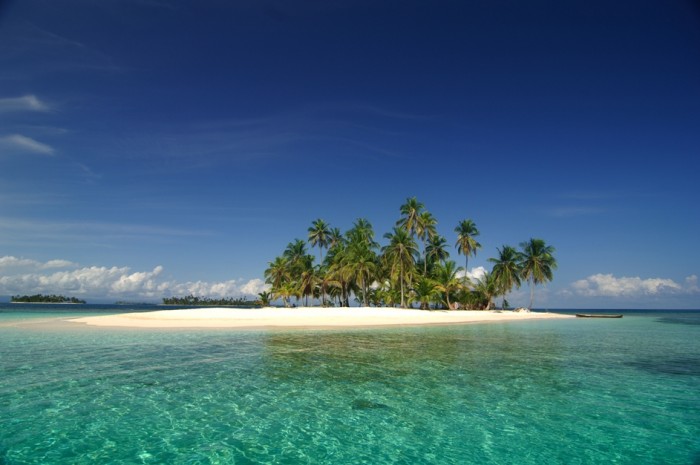
Where Are We Going to Go?
Wherever the wind takes us.
It might sound a little silly, but I really don’t know. We have a few loose plans and a few things set in stone. For example, we’re definitely flying to Denpasar on the 30th of July, so we’ll probably visit some of my favourite places around Bali and might even venture to Lombok. After then, we’ll head to Singapore for a few days so I can show my partner around and he can catch up with a friend. Then we’ll be off to Dubai to set up our banking there, and then making our way to France for a couple of weeks to spend some time with my partner’s family.
After then, who knows? Anywhere with a decent beach, warm weather and that is relatively inexpensive, compared to New Zealand, appeals to me.
I am personally drawn to Asia and would like to base myself there for a few months, probably either in Thailand or Bali. We have been looking at Central America a lot. Next year I want to go back to Coachella festival and we want to see Hawaii and stay in one of the Hawaiian beach rentals, so we might save Central America until after then. We don’t really know! We can just do whatever feels right at the time, which feels pretty cool.
How Do You Work on the Road?
All I need is the Internet and my laptop… so I can work almost anywhere. I tend to spend a couple of hours in a cafe in the morning getting my work done and then I’m out for the day. A big thing I’m working on before we leave is outsourcing, so most of my work can be done without me so I can focus more on travel.
I often buy a local sim with credit and an Internet allowance and tether it to my laptop. That’s allowed me to work on trains and buses throughout South East Asia.
I quite enjoy my work so look I don’t find it hard to self-motivate, even when traveling.
Long trips on buses, trains and planes are excellent opportunities to get some posts written.
I can’t wait to jet off and try this new lifestyle out. I’ve had a bit of experience working online and traveling, but nothing with this much freedom.

